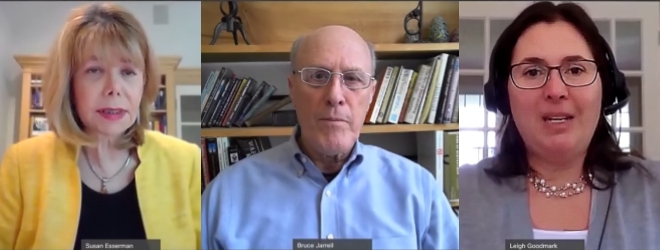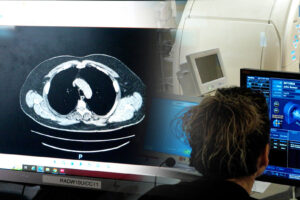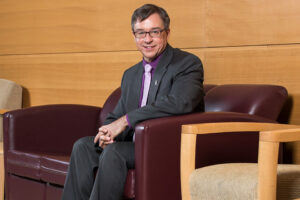Victimization Rising Under COVID-19 Lockdown
Published 5/8/20 on UMB News
One New York Times writer called the situation “another opportunistic infection, flourishing in the conditions created by the COVID-19 pandemic.” In many cases victims of domestic violence and abuse are in lockdown with their abusers, often so fearful of coronavirus infection they avoid medical treatment of injuries. And others, vulnerable to abuse, are finding it difficult to access support services whose staff may be in lockdown at home themselves.
On May 7, University of Maryland, Baltimore (UMB) Interim President Bruce E. Jarrell, MD, FACS, discussed these issues on his weekly online talk program, Virtual Face to Face with Dr. Bruce Jarrell, with two prominent thought leaders: Ambassador Susan Esserman, JD, founder and director of the University of Maryland Support, Advocacy, Freedom, and Empowerment (SAFE) Center at the University of Maryland School of Public Health; and Leigh Goodmark, JD, the Marjorie Cook Professor of Law and co-director of the Clinical Law Program at the University of Maryland Francis King Carey School of Law.

“We’re seeing three different types of effects of the COVID crisis on human trafficking victims,” Esserman explained. “Traffickers are taking advantage of the COVID crisis to further control their clients and to entrap new clients. There are devastating effects on our clients because they are among the most vulnerable of our population. And the support network of school counselors, teachers, child protective services, and other service providers are not available face to face.”
The SAFE Center is a project of the University of Maryland Strategic Partnership: MPowering the State. Formed in 2016, it provides survivor-centered and trauma-informed services that empower trafficking survivors to heal and reclaim their lives. The SAFE Center also aims to prevent trafficking and better serve survivors through research and policy advocacy.
Jarrell noted that the SAFE Center is located in central Prince George’s County, the hardest hit by the coronavirus. “Your center is right there smack in the middle of Prince George’s County, so if there’s an effect, you’re gonna be the first to see it in that location,” he said. “Do you have any particularly telling stories of an individual that you’ve dealt with recently?”
“What this crisis is doing is starkly exposing holes in our safety net,” Esserman noted. “Some of our clients are facing extreme risk as essential employees going to work in low-income jobs with little protection. One of our clients is afraid not to go to work even though he is sick with the COVID because he’s so desperate for income and he’s afraid to lose his job. A number of our clients have lost their jobs and are desperately seeking shelter and food, which we are providing.”
Questions from the audience covered a wide range of issues, from the impact of changes to reporting of sexual assault and harassment under Title IX, to overcoming the “bystander effect” in one’s neighborhood, to the disappearance of many face-to-face resources.
One questioner, who preferred to remain anonymous, asked, “I help in the school system and that makes me sad because those students or staff who had support and a safe place in school — from abuse of all kinds, violence, neglect, and such — what should now be their support network, especially when they can’t get to a phone or call 911, they can’t leave the house due to a stay-at-home order? What do they do?”
Goodmark agreed that the problem is significant and widespread. “It makes me think a lot about the capacity of communities and about our role as an anchor institution in our community to help to provide some of those services in a different kind of way. I do wonder if there is a way for some of our students through their clinical placements and other kinds of things to provide an outlet for people who need to talk but aren’t at the point where a mandated report would be necessary,” she said. “I’m hopeful that we’ll be able to develop new resources like that because right now, there really isn’t a great option, particularly for kids who aren’t being seen by anybody but their families right now. If those families are dangerous places, there’s not much we can do, to be perfectly honest.”
Esserman agreed. The problems aren’t new — housing, food security, access to employment, counseling, and more. But a prolonged lockdown has brought new challenges. “One that we haven’t been dealing with is the digital divide. We may be at this distancing for some time going forward. What we do is face to face. Most of our services, almost all of our services, are face to face, so we’ve transitioned to remote services, but many of our clients don’t have the connectivity to access this.”
Watch the entire Virtual Face to Face with Dr. Bruce Jarrell in the video below.



